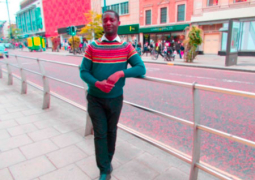Similarly, another great Persian poet ‘Abd al-Rahman Jami (d.1492), who masterfully synthesized the esoteric teaching of the school of wahda al-wujud in his masterpiece, Lawa’ih, expresses succinctly the transcendence of this higher wisdom, in terms of which thought-all thought, including the mentally position conceptions of the dogmas of religion-is not just surpassed, it is even rendered ‘evil’:
‘O heart, how long searching for perfection in school?
How long perfecting the rules of philosophy and geometry?
Any thought other than God’s remembrance is evil suggestion.’
It is this perspective which enable one to reconcile competing truth claims within a unique Reality which transcends all such claims, that Reality to which the ‘truths’ bear witness, to which they lead, and from which they receive all their value. The following words of the Quran bear witness to the unique Reality from which all religions derive: Our God and your God is One (29:46); as for leading back to the same Reality: For each of you we have established a Law and a Path (5:48).
If the paths revealed by God are different and divergent, then they cannot but be accompanied by divergent truth-claims, that is, claims pertaining to ways of conceiving and realizing the truth; but insofar as this truth is but the conceptual expression of an ultimate Reality, and insofar as this Reality is posited as the alpha and omega of all things, the divergent conceptual claims to truth, the ultimate Reality-that of God, the ultimate truth, the ultimate Reality-both truth and reality being in fact synthesized in the Arabic name of God, al-Haqq, ‘The Real/The True’. If the source and the summit of the divergent paths is a single, unique Reality, it is this oneness of the Real which must take ontological precedence over the competing ‘epistemological’ claims to truth. In other words, Being precedes thought; thought is consummated in Being. The mutually exclusive truth claims, in their purely conceptual form, might be seen as so many unavoidable shadows cast by the divinely-willed diversity of religious paths; these diverse paths, in turn, can be envisaged as so many ‘lights’ emanating from the one and only Light, this unique Light being refracted into different colours by the prism of relativity, and these differently colored lights then crystallizing in the forms of the various religions, according to this symbolism.
Red, blue and green lights remain lights even while of necessity excluding each other: no light can be identified with another, expect insofar as each is identified with light as such, and not as such and such a light. Here, the Essence of the Real, or the Absolute, is represented by light as such, and the religions can be seen as colours adding to that light something of their own relativity even while being the vehicles of that light. As will be seen below, this means of reconciling outwardly divergent religious forms within a unitized spiritual essence evokes Ibn al-Arabi’s image of the cup being coloured by the drink it contains. The water-standing here for the Absolute-within the cup-the particular religion-becomes ‘coloured’ by the colour of the cup; but this is so only extrinsically, and form the human point of view; for intrinsically, and form the divine point of view-sub specie aeternitatis-the water remains colorless.
Returning to the idea of da’wa-as-dialogue, in the Christian context, those most opposed to the reductionistic tendencies of the kind of pluralism associated with John Hick argue forcefully that a Christian has both the right and the duty to ‘bear witness’ to his faith: to some degree at least, and in some manner, implicit or explicit, it becomes one’s duty to invite others to study and investigate the wisdom that is a crucial prerequisite for anyone who wishes to engage in dialogue on behalf of a particular faith: to represent that faith must to re-present’ it, to present its wisdom, beauty-but also, its normativity, failing which one will not be seen as a ‘valid interlocutor’ within the tradition one seeks to represent.
It might be objected here: it is impossible to meet every type of criterion which the different schools of thought within any given religious tradition may propose for one to be deemed a ‘valid interlocutor’ on behalf of that faith. Whilst this is true, it is nonetheless worth making the effort to reduce as far as possible the basis upon which one’s credentials as a valid interlocutor would be rejected by one’s co-religionists. And one of the main bases for this rejection is, without doubt, the perception that those engage in dialogue are so intent on reaching out to the Other that they do not sufficiently respect the integrity of the Self-that is, they inadequately uphold the normativity of the tradition ostensibly being represented in dialogue. This is a factor which cannot be ignored if one is concerned with a dialogue that aims to be effective, not just in the debating halls of academia, but also in the wider world, wherein the overwhelming majority of believers within the various religions believe deeply in the normativity of their particular religion.
How, then, can the Muslims engaged in dialogue cultivate that wisdom which perceive the truth, the holiness, and the beauty that is contained within the religions of the Other, whilst simultaneously upholding the normativity of his faith, and the specificity of his identity? The perception of the validity of other, alien forms of religious belief acquires a particular acuteness in the light of the following saying of the Prophet-which exists in slightly different variants, in the most canonical of hadith collections-and which concerns the possibility of seeing God in the Hereafter. The Muslims are confronted by a theophany of their Lord, whom they do not recognize: ‘I am your Lord’, He says to them. We seek refuge in God from you,’ they reply, ‘we do not associate anything with our Lord.’ Then God asks them: ‘Is there any sign (aya) between you and Him by means of which you might recognize Him?’ they reply in the affirmative, and then ‘all is revealed’ and they all try to prostrate to Him. Finally, as regards this part of the scene, ‘He transforms Himself into the form in which they saw Him he first time, and He says: “I am your Lord”, and they reply: “You are our Lord!”.
How, then, is one to recognize the divine ‘face’ in the traditions of the Other; how does one recognize this ‘lost camel’- the wisdom contained within the religions of the Other? For this wisdom may well be expressed in forms of divine self-manifestation which are not only alien, but, in addition, so unlike one’s own received wisdom that one takes refuge from them in one’s own ‘God’. If believers on the Day of Judgement are unable to recognize God in anything other than forms of their own beliefs, through the blinkers of their own prejudices, how can believers, here and now, ensure that they do not fall into this same trap?
Evidently, prejudice is one of the main obstacles in the path of any dialogue which aims at discovering the wisdom of the Other; however, one of the principal problems arising out of the removal of prejudice towards the Other is the weakening of the identity of the Self. How can we reach out to the Other in an unprejudiced manner, without this absence of prejudice diluting or subverting our own sense of identity? Or again: How can we be universalist in our spiritual vision, without sacrificing the specificity of our faith and praxis.
It is our contention here that in the Islamic tradition, the Sufi school of thought associated with Muhyi al-Din Ibn al-Arabi, known in Sufism as ‘the greatest shaykh’ (al-Shaykh al-Akbar) can be of considerable value in helping to cultivate the wisdom which synthesizes the two principles in question here: an unprejudiced, universalist, supra-confessional view of spirituals, on the one hand; and a normative approach to the specificity and particularity of one’s own faith, praxis, and identity on the other. It is possible to arrive at an inclusive perspective, one which, however paradoxically, includes exclusivism; this is a perspective which transcends the false dichotomy, so often encountered in our times, between a fanatical exclusivism which disdains all but one’s own faith, and a relativistic inclusivism which disdains all but one’s own faith, and a relativistic inclusivism which fatally undermines the integrity of one’s own faith. Upholding the integrity of one’s faith is difficult if not impossible without a definitive, clearly delineated identity, which in its very specificity and particularity cannot but exclude elements of the Other on the plane of religious from; by ‘religious form’ is meant not just legal and ritual forms but also conceptual and doctrinal forms. However, all such forms are radically transcended, objectively, by the divine essence of the religions; and all the modes of identity commensurate with these forms are just at radically dissolved, subjectively, within the consciousness of one whose soul has been effaced within that essence. These are natural corollaries of Ibn al-Arabi’s complex and challenging perspective on the dynamics of religious consciousness.
(To be continued).




